
8
7
PLB-110
All registration forms will be entered in the 406 MHz beacon registration database
within 48 hours of receipt. A confirmation letter, a copy of the actual registration and a
proof-of-registration decal will be mailed to you within 2 weeks. When you receive these
documents, please check the information carefully, and then affix the decal to the back
of your beacon in the designated marked area.
You will need to repeat this process if you change your address, change your country of
residence (the PLB will need to be recoded also), change emergency contact person (or
their contact information changes), sell the PLB to another person or dispose of the PLB.
If your PLB is lost or stolen, report it to your local authorities and contact NoAA at 1-888-
212-7283 (or your national authority) with the following information:
• Police department name
• Police phone number
• Police case number
Check with local/national administrations to determine if a radio license is required.
SECTIOn 5 – RESPOnSIBLE USE
This PLB is a distress alerting and locating device to be used when you or a member of a
group you are traveling with is in grave and imminent danger. It is a device of last resort,
for use when all other means of self-rescue have been exhausted; and the loss of life,
limb, eyesight or valuable property will occur without assistance. Deliberate misuse may
incur a severe penalty
.
What does grave and imminent danger mean?
Distress assessment (one person alone)
There are three factors to take into consideration. 1) The time it will take for rescue
personnel to arrive once you activate the PLB. 2) Your physical condition and expected
survival time. 3) environmental conditions.
Rescue arrival
An important factor is the time it will take SAR forces to locate you. Consider where you
are; where SAR forces with the necessary equipment are located; consider weather
and environmental conditions; and estimate how long it will take for them to arrive by
different methods (air vehicle, land vehicle, walking, etc.).
Physical Condition
If you are in immediate danger of losing your life; your expected time of survival is less
than 12 hours; or you can not safely make it to help before exhaustion/unconsciousness
then it is time to activate the PLB. You are the best judge of your physical condition.
Environmental Conditions
environmental conditions can impact both rescue arrival time and your survival time.
Your PLB will broadcast for a minimum of 24 hours. If your assessment is you will lose
your life in 24 hours or less then its time to activate the PLB.
Being worried about personal survival is not a reason to activate the PLB. You must
genuinely believe that you can not extract yourself from your environment and survive
without the assistance of SAR forces.
Distress assessment (group - more than one person)
The same three factors mentioned above are taken to into consideration, except the
ability of the person or persons in distress to communicate and assess their condition
change the dynamics of the situation. If any person in the group is unconscious, can not
communicate their condition to the group, or the group can not extract the person or
persons in distress without the assistance of SAR forces then activate the PLB.
SECTIOn 6 – OPERaTIOn
The SATRo
TM
Model PLB-110 is designed to be manually deployed and activated. It is
only to be activated in grave and imminent danger and when all other means of self-
rescue have been exhausted. When properly registered as required, the activation of the
PLB tells Search and Rescue who you are, where you are, and that you are facing a life
threatening situation.
To activate your PLB in a distress situation, follow these steps:
1. Rotate the antenna latch to unwrap the antenna from around the case.
2. Move the antenna into the upright position. The strobe light and antenna must be
pointed up to the sky.
3. Slide the oN cover to the right.
4. Depress the oN/oFF button for 1 full second.
While transmitting your distress signal, the red LeD will flash every two seconds and the
strobe light will flash every 3 seconds alerting you that your beacon is active.
antenna Position
For maximum performance you must deploy the antenna into the proper position (see
Figure 5). Be sure the antenna is facing the sky, the gPS receiver antenna is not covered
or obstructed, and avoid submerging in water. The device is intended to operate on or
above ground only. It is not intended to operate while floating in water.


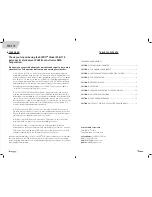
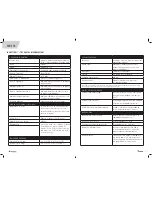
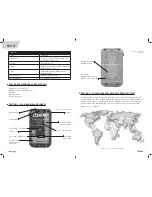
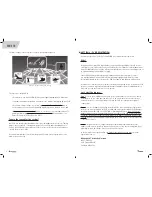
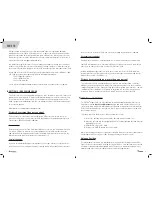
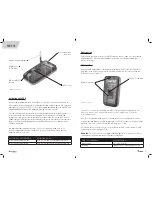
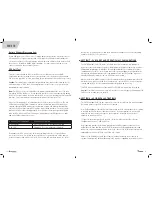
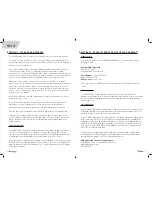
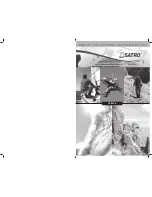
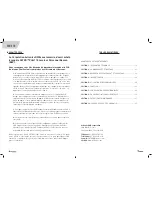
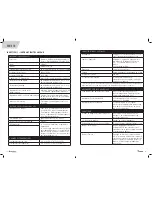
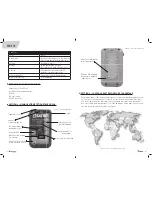
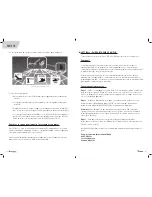
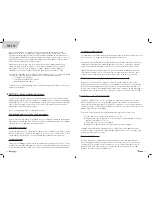
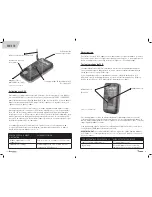







![Navig[8]r NAVBIKE-GPS User Manual preview](http://thumbs.mh-extra.com/thumbs/navig-8-r/navbike-gps/navbike-gps_user-manual_3574097-01.webp)












